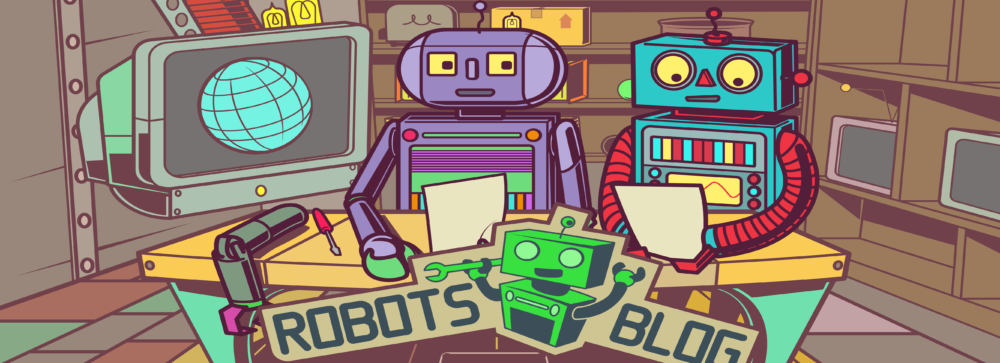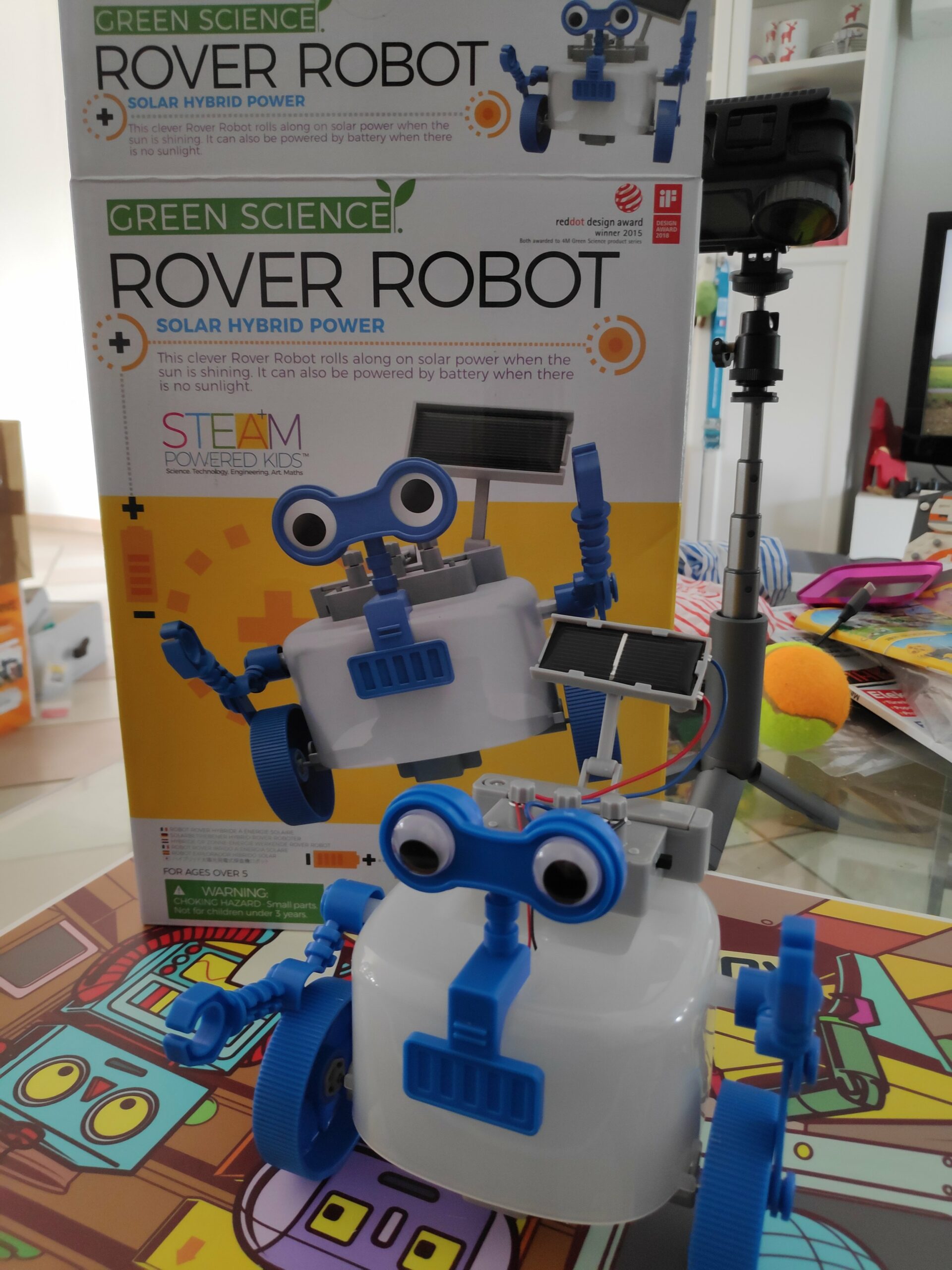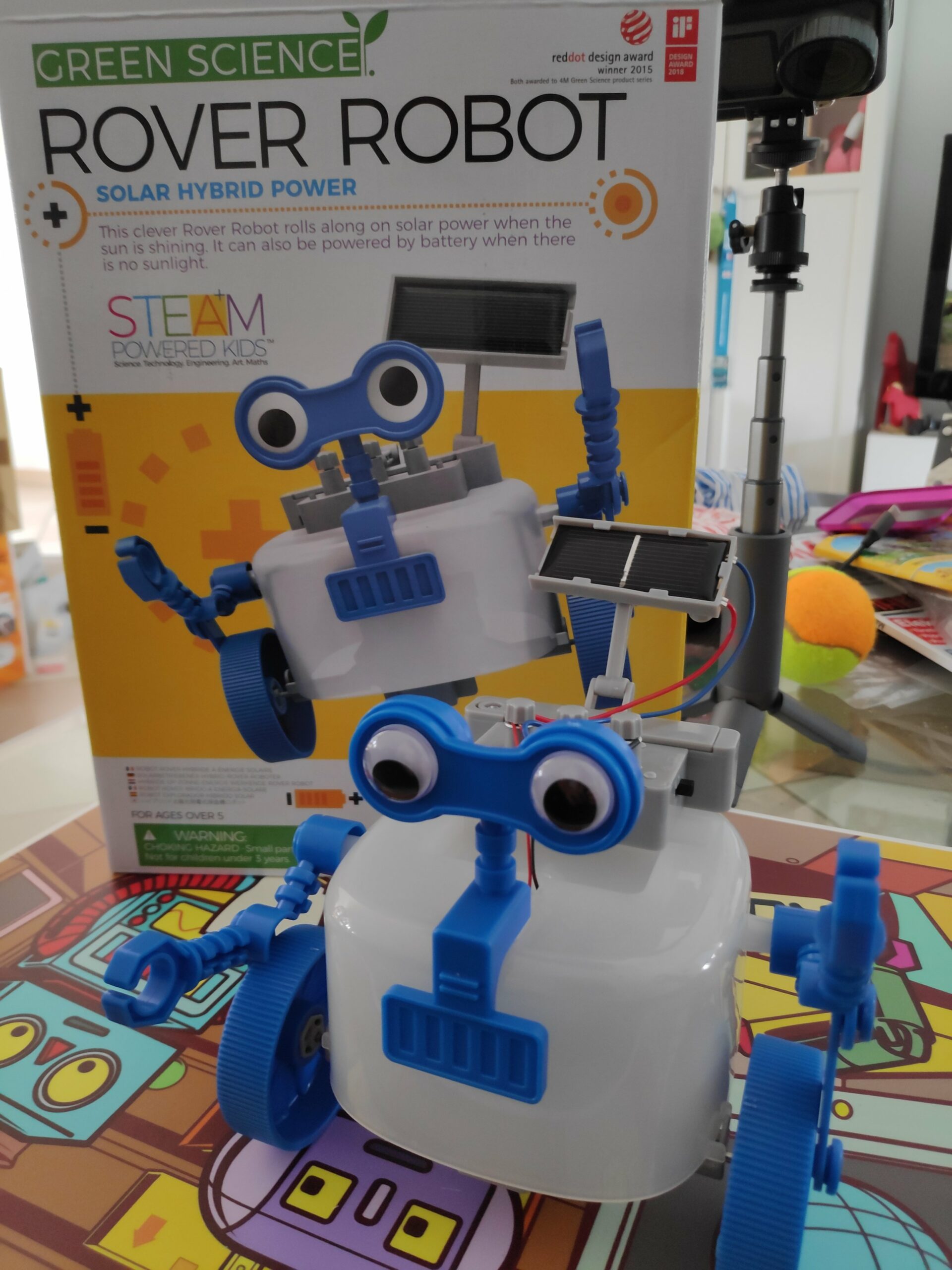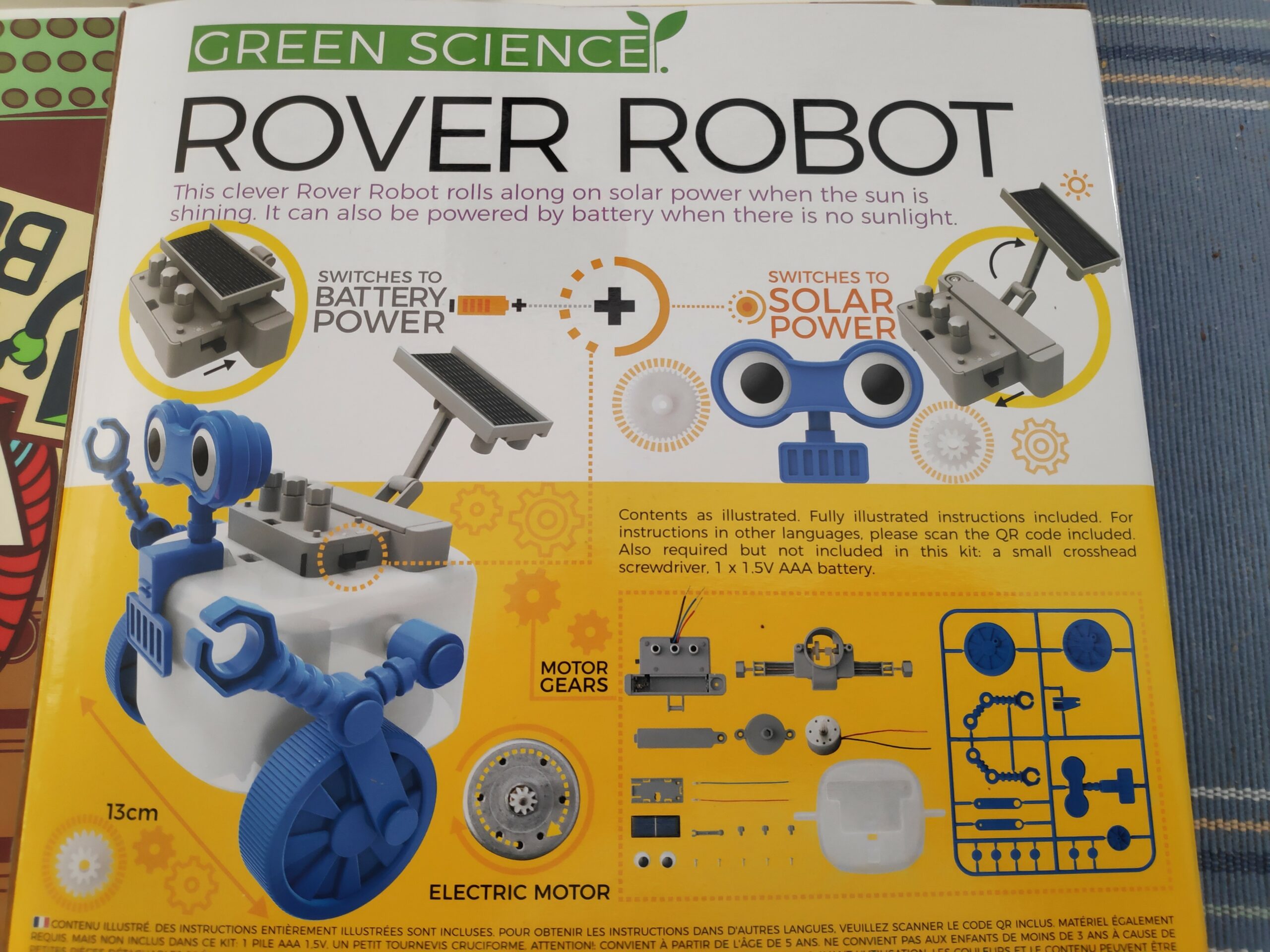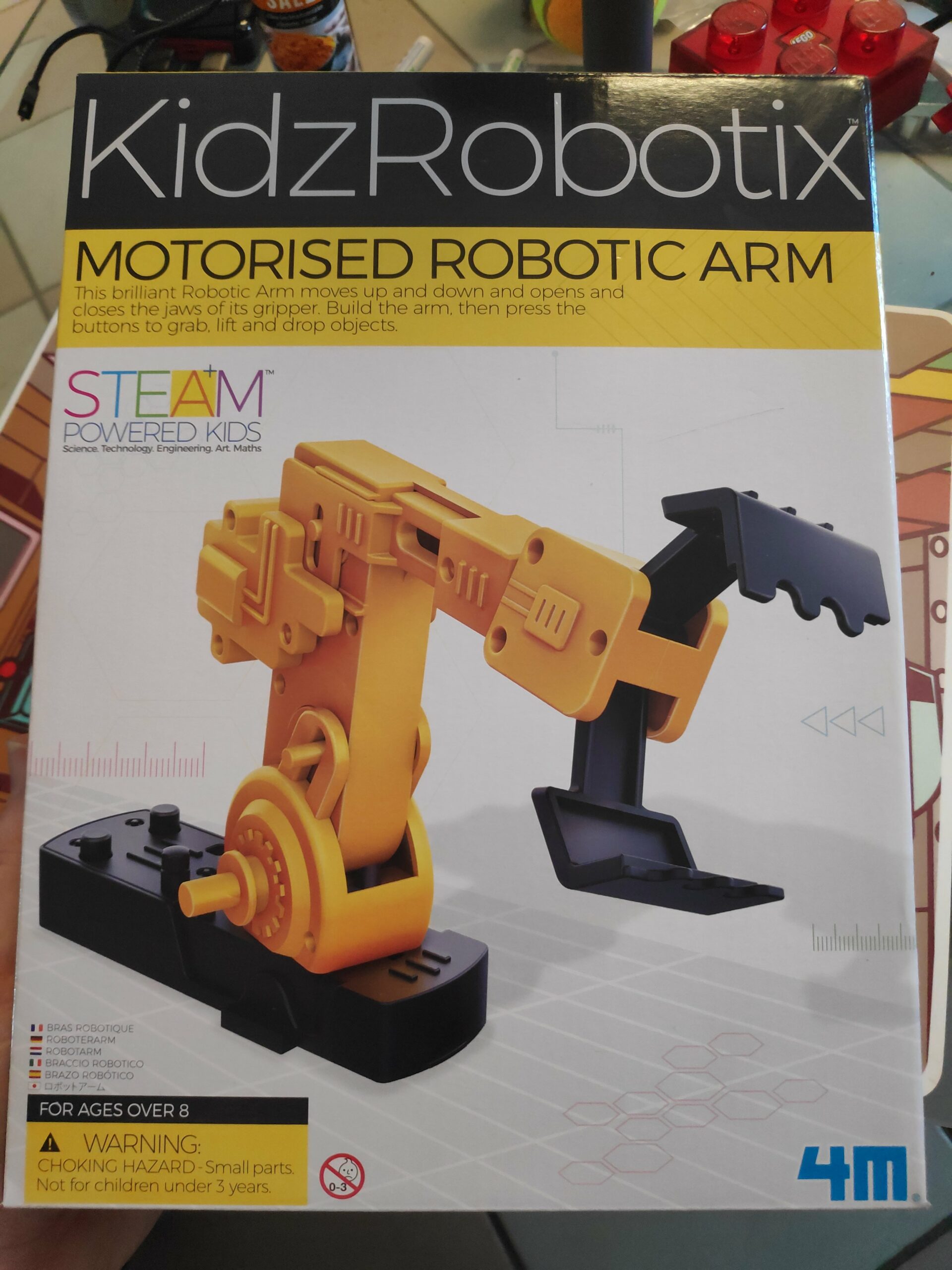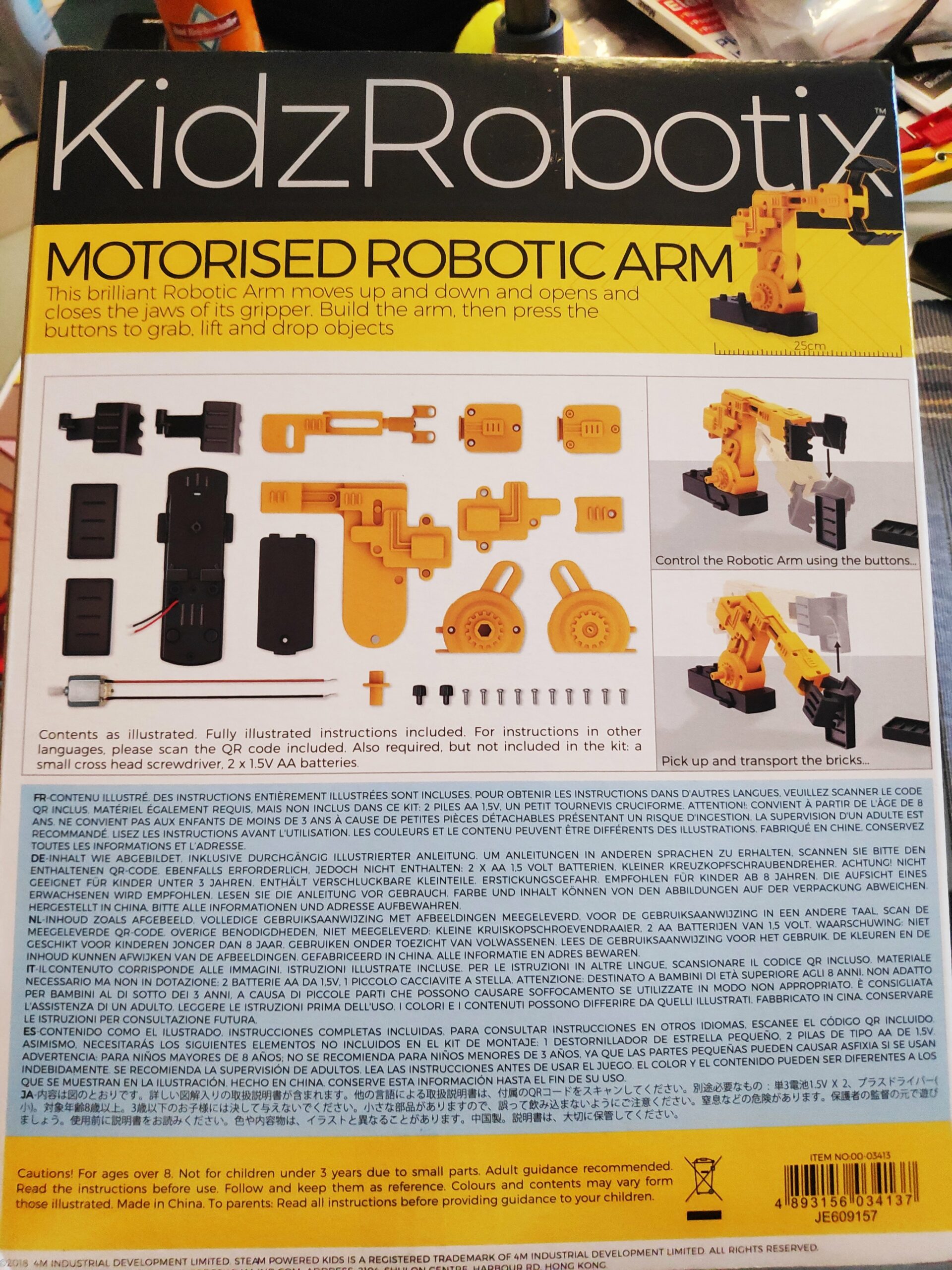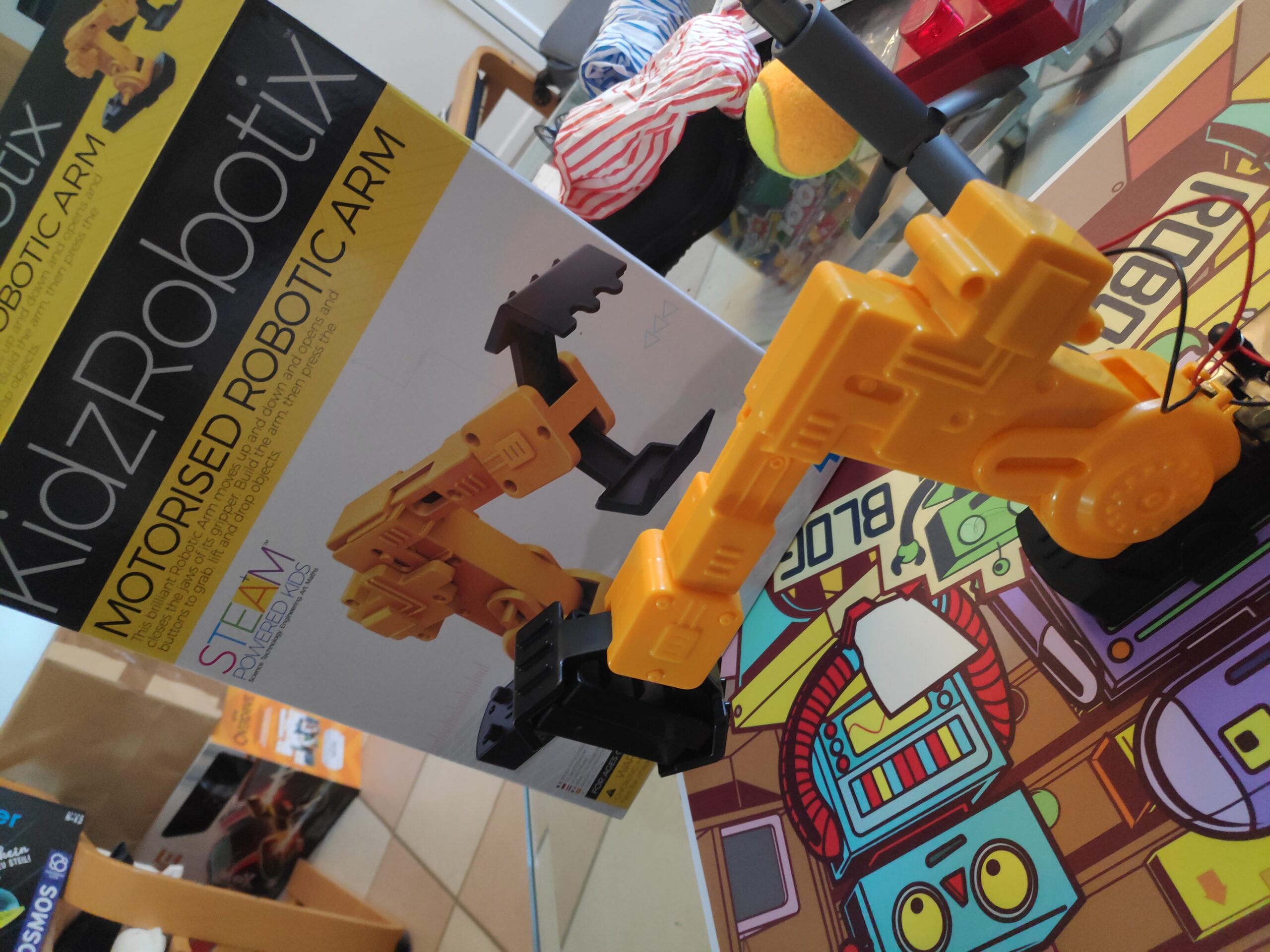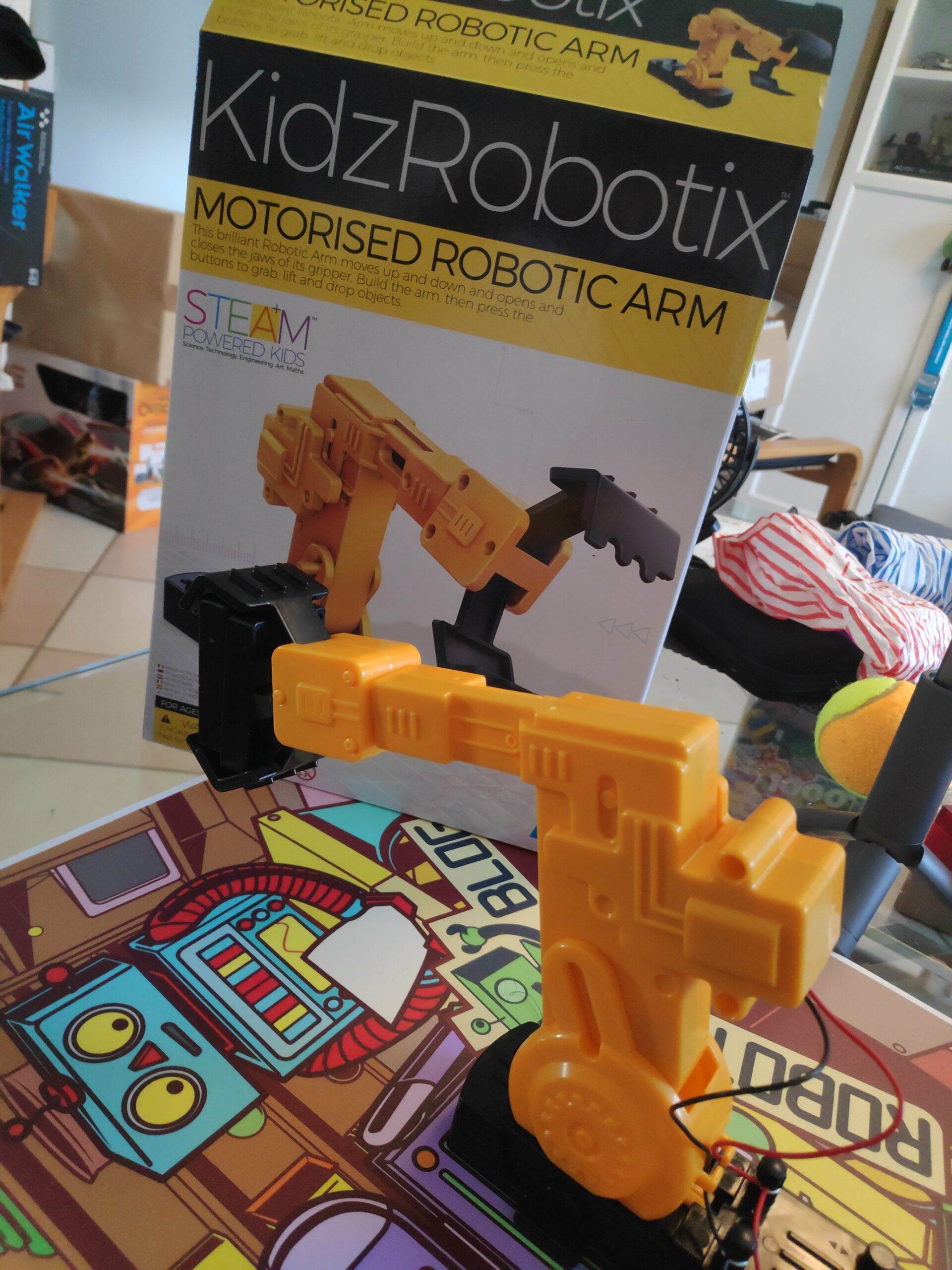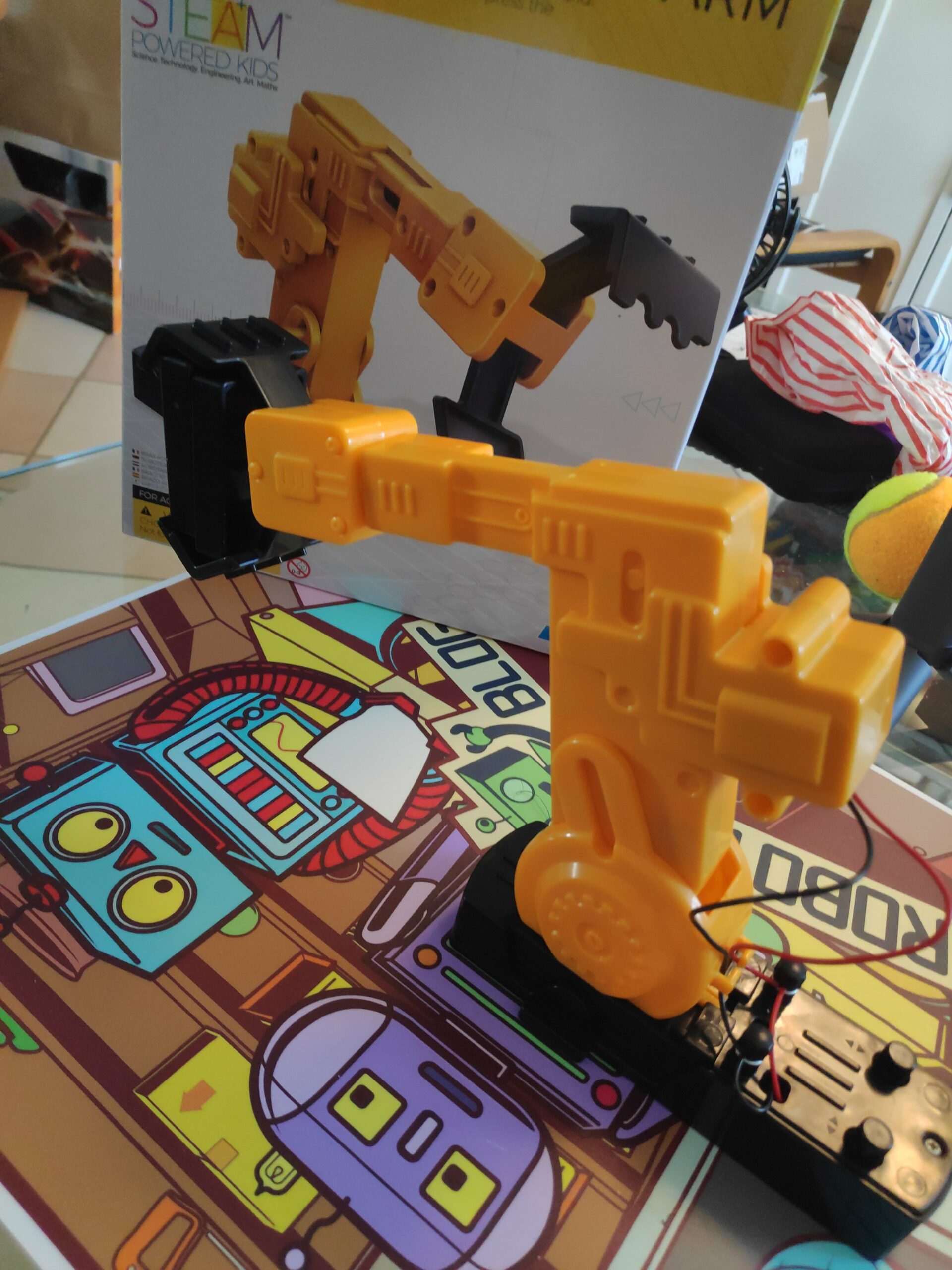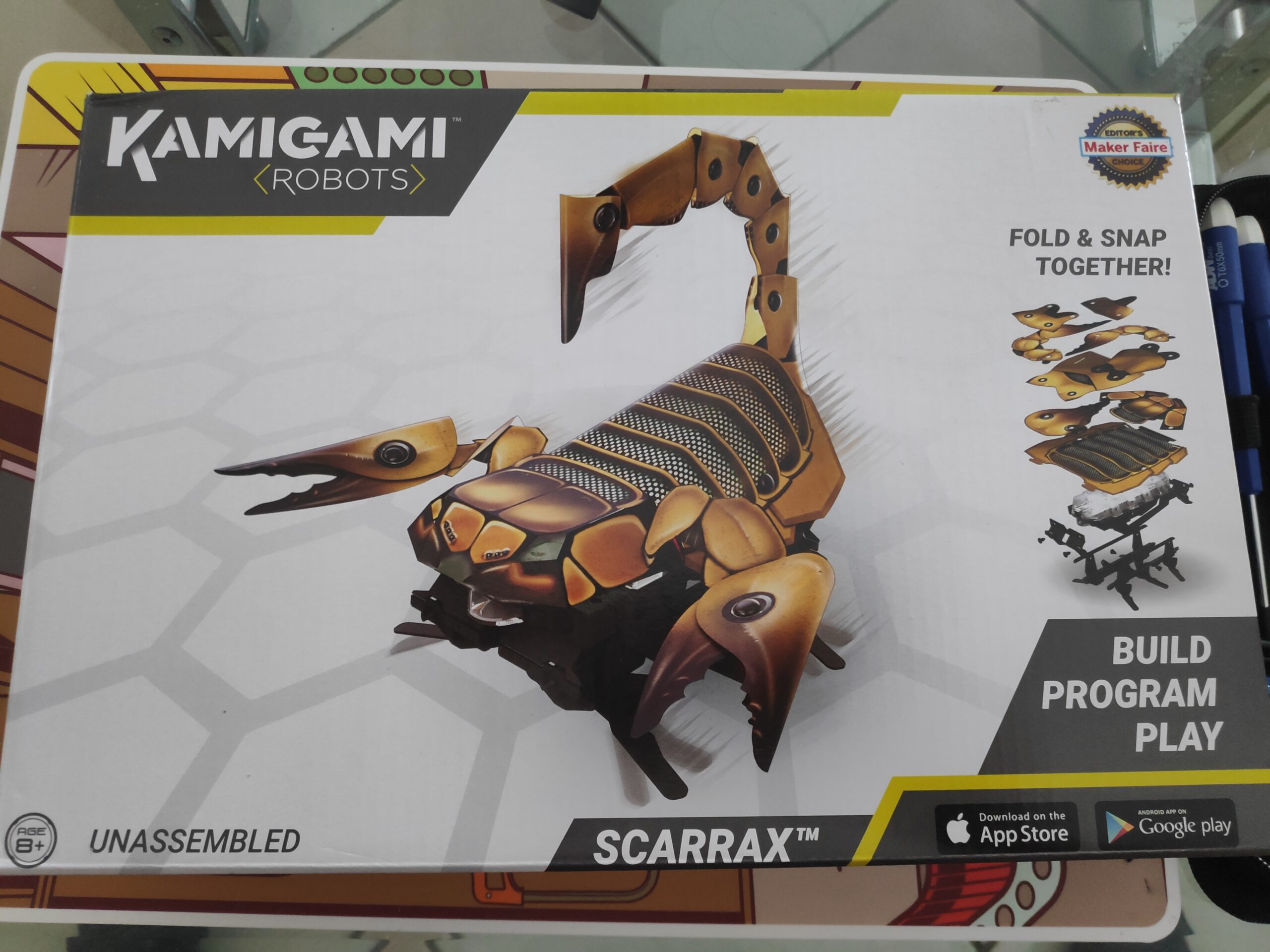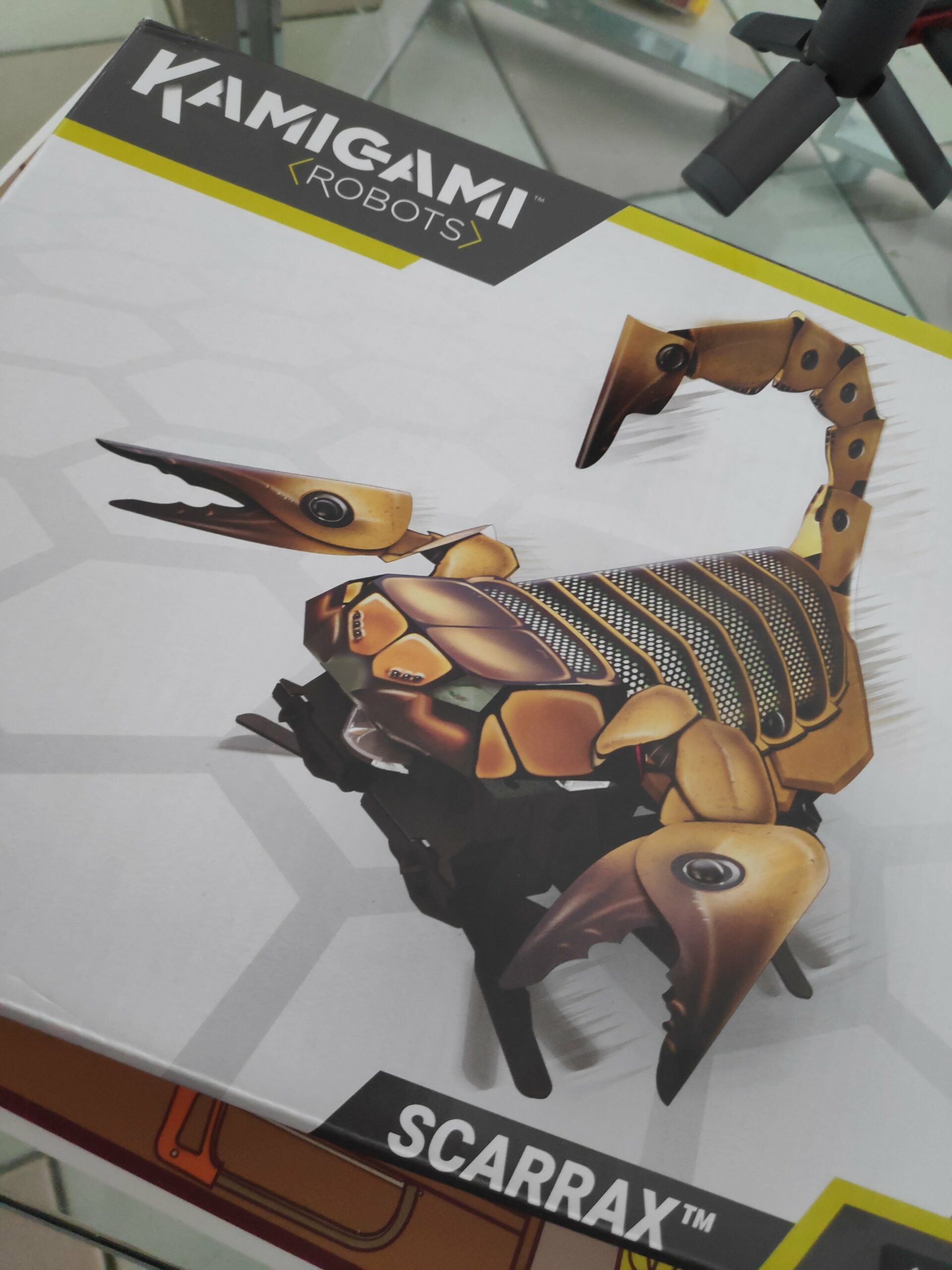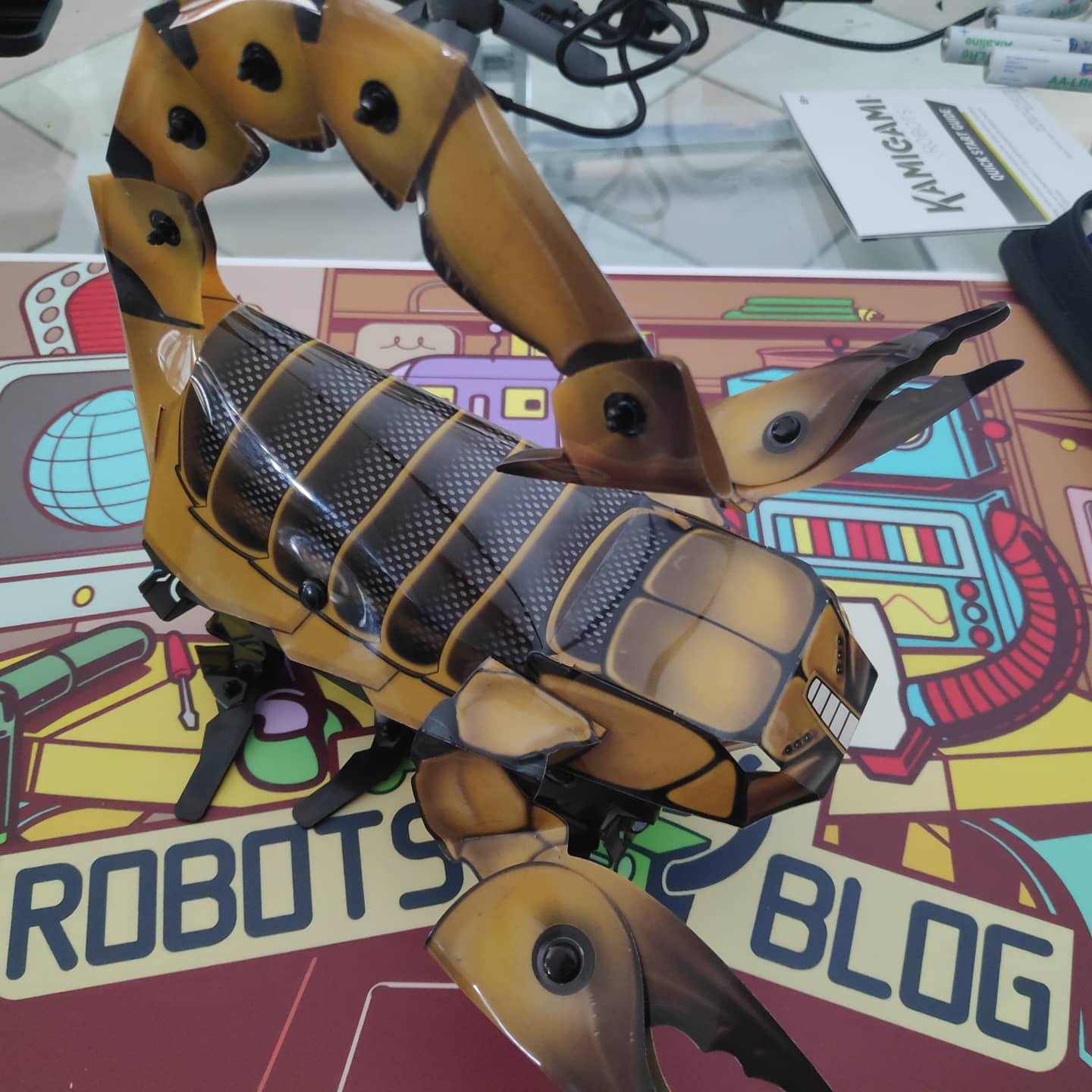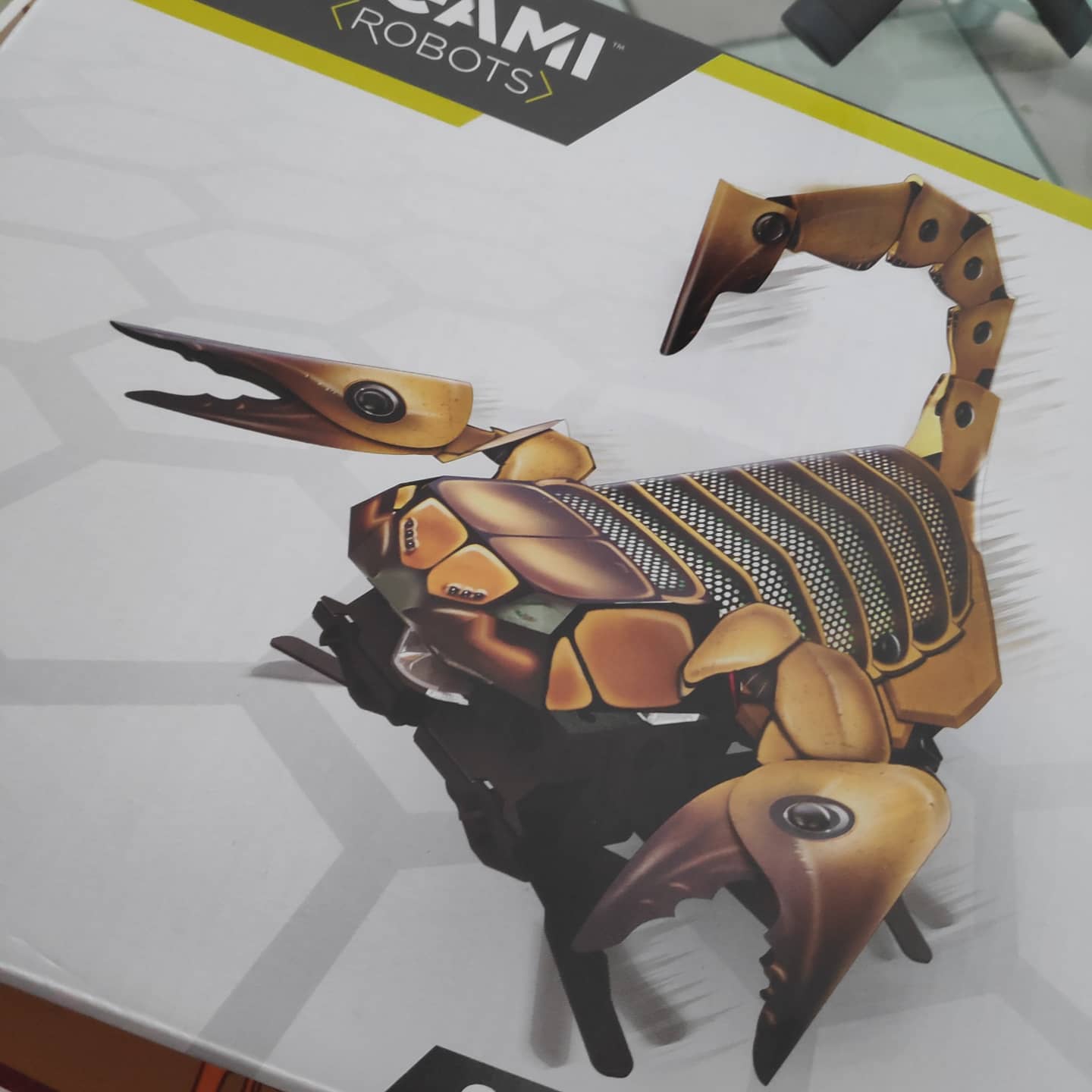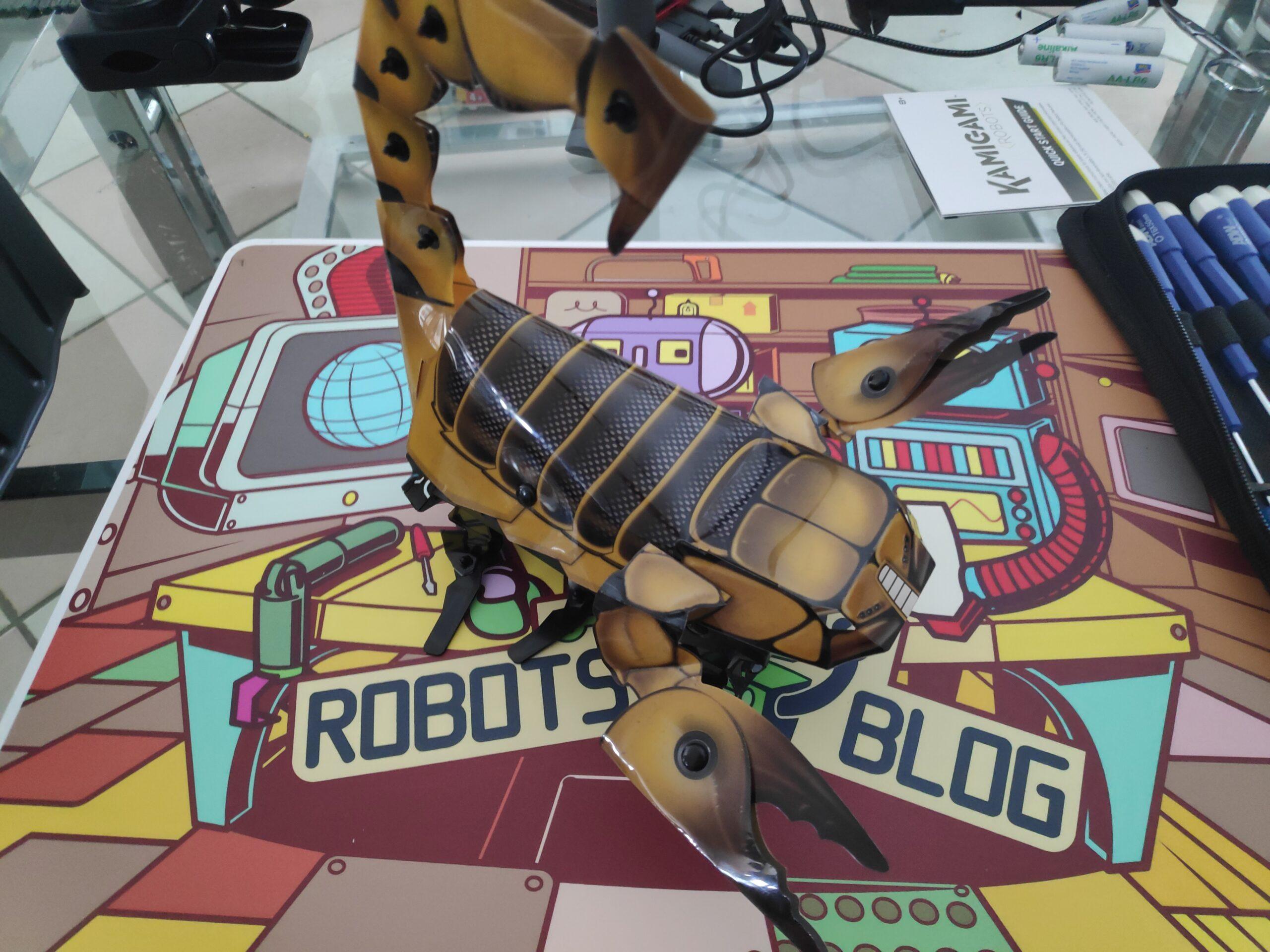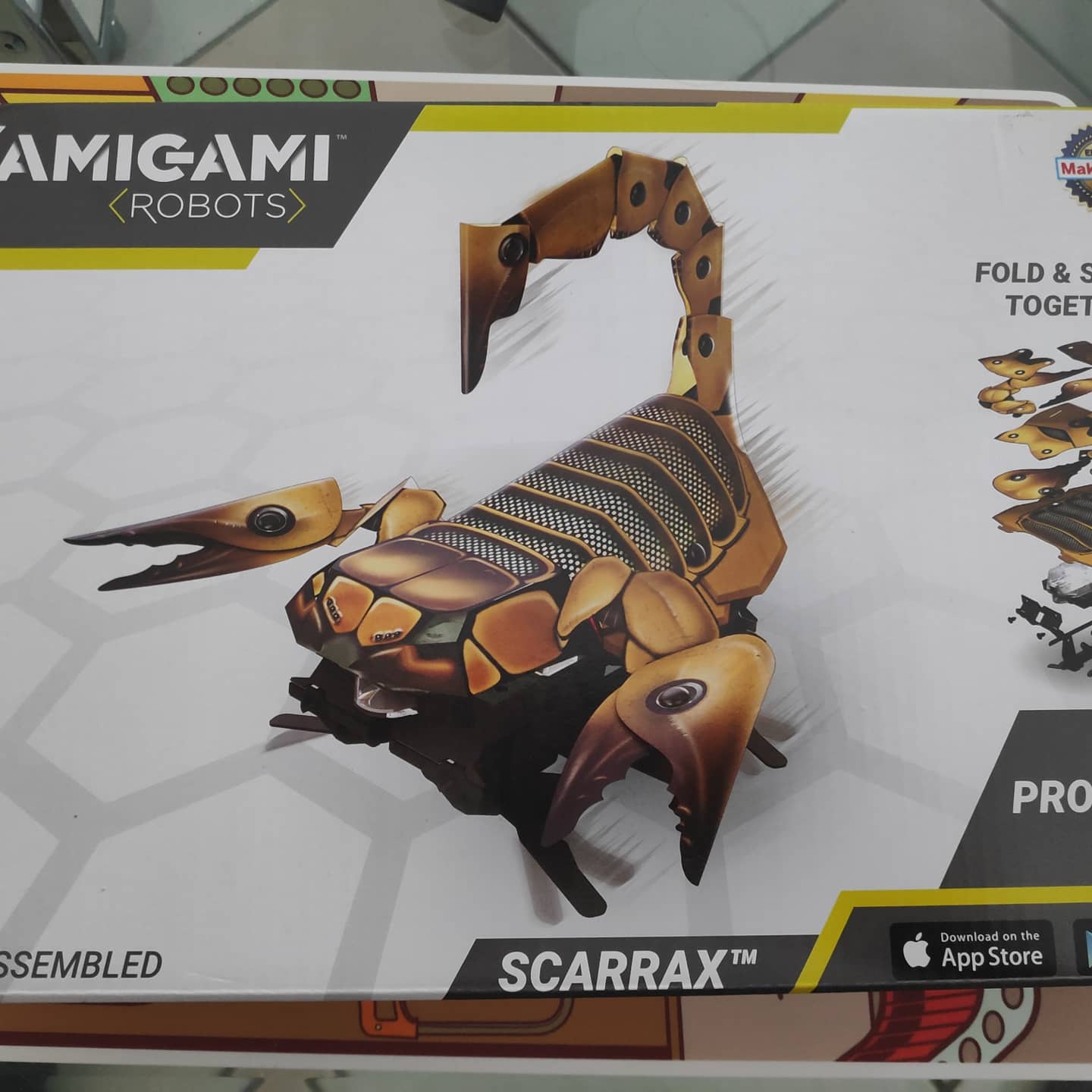Archiv der Kategorie: Hardware
4M KidzRobotix Motorised Robotic Arm
4M KidzRobotix Fridge Robot
This robot can climb up your fridge
Luwu Intelligence Technology Announces Launch of XGO-Mini: An Advanced Quadruped Robot With AI Modules
BEIJING, Aug. 3, 2021 /PRNewswire/ — Luwu, a STEM education technology company, has announced the launch of XGO-Mini, a 12 DOF, omnidirectional quadruped robot that can interact with its surroundings using voice, image recognition, and tracking. This programmable, open-source robot is the perfect way to learn about robotics for new and advanced users. XGO-Mini is available now on Kickstarter: https://www.kickstarter.com/projects/xgorobot/xgo-mini-an-advanced-quadruped-robot-with-ai-modules.
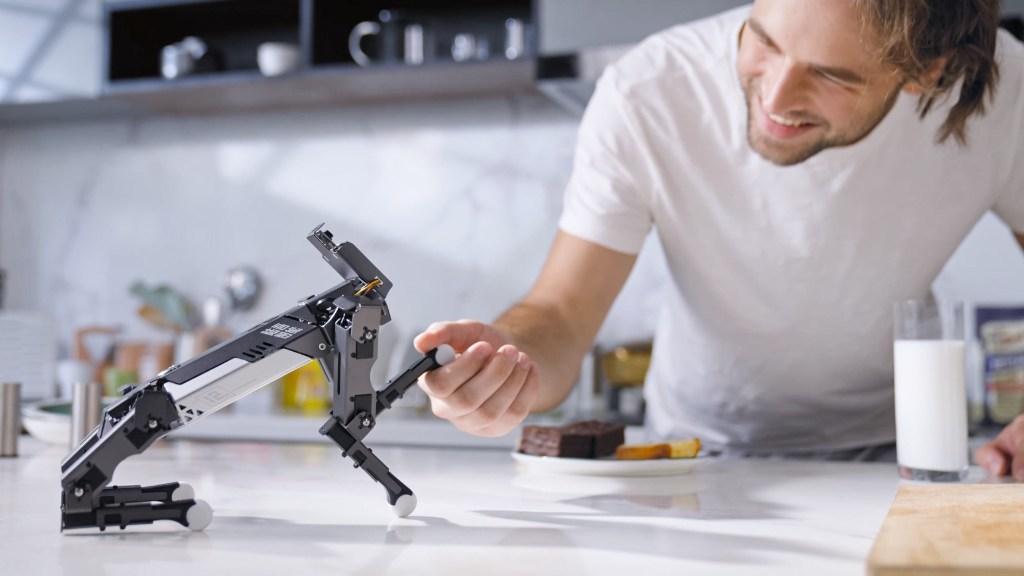
At first glance, XGO-Mini appears to be an incredible full-motion robotic dog. But it’s so much more than that. This desktop-sized AI quadruped robot with 12 degrees of freedom can achieve omnidirectional movement, six-dimensional posture and a variety of motions. As a quadruped robot, XGO-Mini can mimic the natural motion of a dog walking and is capable of movement on uneven terrain and extremely rough surfaces. It can even adapt to avoid obstacles by adjusting its height. With its unique bionic system, XGO Mini can perform any dynamic movement. Equipped with a 9-axis IMU, its joint position sensor and electric current sensor are able to reflect to its own posture and joint rotation angle and torque, which are used for algorithms verification and exploitation. The robot can be programmed for a variety of education, research, algorithm verification, and entertainment possibilities.
„As a technology company centered on robotics and STEM education, we understand the importance of robotics and AI education for youngsters. These technologies will be a key to the future. XGO Mini, a bionic quadruped robot dog for youth AI education, is the perfect platform for developing robotics and programming skills in a fun way. With 12 DOF, omnidirectional movement, and advanced-level AI, it is capable of virtually any movement or task and gives users unlimited programming possibilities that help users to explore, learn, and have fun,“ said Luwu Intelligence Technology Product Manager Pengfei Liu.
XGO-Mini is an incredibly versatile robot that can perform a variety of useful tasks and can be a very helpful assistant in daily life. It features fully functional AI modules that can facilitate both entry- and advanced-level AI applications. The Al modules feature visual recognition, voice recognition, and gesture recognition, giving XGO-Mini the ability to hear, recognize and reply to users like a real dog. It also can track multiple colors and recognize QR codes.
As an open-source robot with the Robot Operating System (ROS) and compatible with Python AI system, anyone can create their own functions for XGO-Mini. It can also be programmed by using common coding languages like Python and C++ that make it perfect for STEM education.
XGO-Mini Advanced Quadruped Robot with AI Modules is an incredible robotics platform for entertainment, STEM education, and exploring creativity. XGO-Mini is available now on Kickstarter with special pricing for early supporters. Learn more here: https://www.kickstarter.com/projects/xgorobot/xgo-mini-an-advanced-quadruped-robot-with-ai-modules.
Dash Robotics/Mattel Kamigami Robots „Scarrax“ Scorpion
Dash Robotics/Mattel Kamigami Robots „Scarrax“. Find the latest News on robots drones AI robotic toys and gadgets at robots-blog.com. Follow us on our Blog Instagram Facebook Twitter or our other sites. Share your robotics ideas and products with us. #robots #robot #omgrobots #roboter #robotic #mycollection #collector #robotsblog #collection #botsofinstagram #bot #robotics #robotik #gadget #gadgets #toy #toys #drone #robotsofinstagram #instabots #photooftheday #picoftheday #followforfollow #instadaily #kamigami #origami #mattel #scorpion #insect #mattel #toyrobot
Sleepy Robot wants just 5 more minutes
When it’s too early in the morning and your robot refuses to work because it wants to snooze some more…
#igus #robolink #robot #robots #automation #lowcostautomation #snooze #morning #video #fun #sleep #just5moreminutes #tired #wakeup #robotsblog. Find the latest News on robots drones AI robotic toys and gadgets at robots-blog.com. Follow us on our Blog Instagram Facebook Twitter or our other sites. Share your robotics ideas and products with us. #robots #robot #omgrobots #roboter #robotic #mycollection #collector #robotsblog #collection #botsofinstagram #bot #robotics #robotik #gadget #gadgets
SoftGripping expands its product line
SoftGripping, the internal robotic SoftGripper department of the logistic company Wegard GmbH has reached its market capitalization goal of 8 million Euro in the year 2020 and is now moving from the initial intent of establishing SoftGripping leadership in the cobot area towards the high-speed automation market. The internal project’s CTO and co-founder Alexey Stepanyuk is eager to tackle new areas with the industrial and hygienic line. “We focus on the needs of our customers and every development is custom to the application on hand” he emphasized in an interview, “our engineers know that solutions in food automation are as custom as the plants growing on the fields. There is a new evolutionary stage coming and we can’t wait to highlight it, although today’s robotics technology is far from perfect.” Let’s wait and see what the future brings!

Information about hygienic line grippers: https://soft-gripping.com/hygienic-softgripper/
Information about industrial line grippers: https://soft-gripping.com/industrial-softgripper/
Igus Robolink RL-DP-5 Installation
Today I installed my new igus low cost Automation robotarm. This still counts as common computer peripheral, right? …Right?
Find the latest News on robots, drones, AI, robotic toys and gadgets at robots-blog.com. Follow us on our Blog, Instagram, Facebook, Twitter or our other sites. Share your robotics ideas and products with us. #robots #robot #omgrobots #roboter #robotic #mycollection #collector #robotsblog #collection #botsofinstagram #bot #robotics #robotik #gadget #gadgets #drone #robotsofinstagram #instabots #photooftheday #picoftheday #followforfollow #instadaily #werbung #igus #rbtx #lowcostautomation #robotarm #robolink #automation #showyourdesk
MYBOTSHOP nimmt mit leistungsstarkem Kettenfahrzeug Fahrt auf
Autonomes Fahren ist schon lange keine Zukunftstechnologie mehr. Doch nicht nur im PKW auf der Straße soll alsbald auf den Fahrer verzichtet werden. So hat auch MYBOTSHOP, der deutsche Vertriebspartner für Robotik, Sensorik und Automatisierungstechnologie, ein neues Gefährt im Programm. Mit dem weiterentwickelten MBS ROVO 2 führt das Unternehmen aus Nordrhein-Westfalen ein Kettenfahrzeug auf dem Robotermarkt ein, das den meisten Umwelteinflüssen standhält und die Kosteneffizienz in Unternehmen steigern soll.
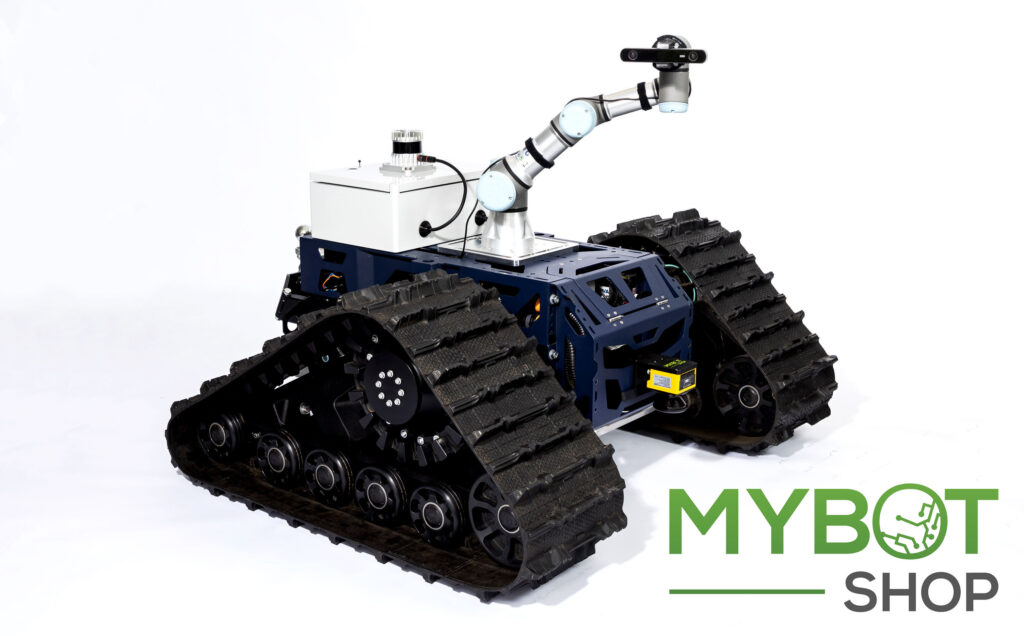
Neben der Basis-Version im bald erhältlichen MYBOTSHOP-grün, gibt es das Kettenfahrzeug auch als voll konfigurierbare und auf Kundenwünsche zugeschnittene Premium-Version. Dabei profitiert der Endkunde von der jahrelangen Erfahrung und Spezialisierung im Bereich der Anwendungsentwicklung und Forschung, die hausintern bei MYBOTSHOP umgesetzt wird. Das bedeutet, dass Zusatzelemente komplett konfigurierbar und bei MYBOTSHOP auf Anfrage erhältlich sind. Somit bekommt der Endkunde dann ein komplett mit Software aufgespieltes und in Haus getestetes Produkt ausgeliefert. Und auch während der Nutzung steht MYBOTSHOP mit seinem Support und zur Wartung beratend zur Seite. Für die ROS-basierte Programmierung wird eine vollständige Dokumentation als Support auf der Website zur Verfügung gestellt.
Das geländegängige und wassergeschützte Fahrzeug (IP 65) überwindet souverän verschiedene Untergründe wie Schlamm, Schnee und Eis, Kies, Schotter und Sand. Ermöglicht wird dies durch den niedrigen Anpressdruck, der auf der Kettenlänge basiert. Die Akkulaufzeit liegt derzeit bei ca. 8 h (abhängig von Geschwindigkeit und Belastung) und die maximale Geschwindigkeit des Fahrzeugs bei knapp 20 km/h. Optional kann ein Modul für die Schnellladefunktion erworben werden. Mit einer Traglast von bis zu 500 kg bietet sich das Fahrzeug besonders als Transportplattform an. Die Zugkraft liegt bei knapp 2 t und via optionaler Anhängerkupplung lassen sich Anhänger und Fahrzeuge problemlos ziehen.
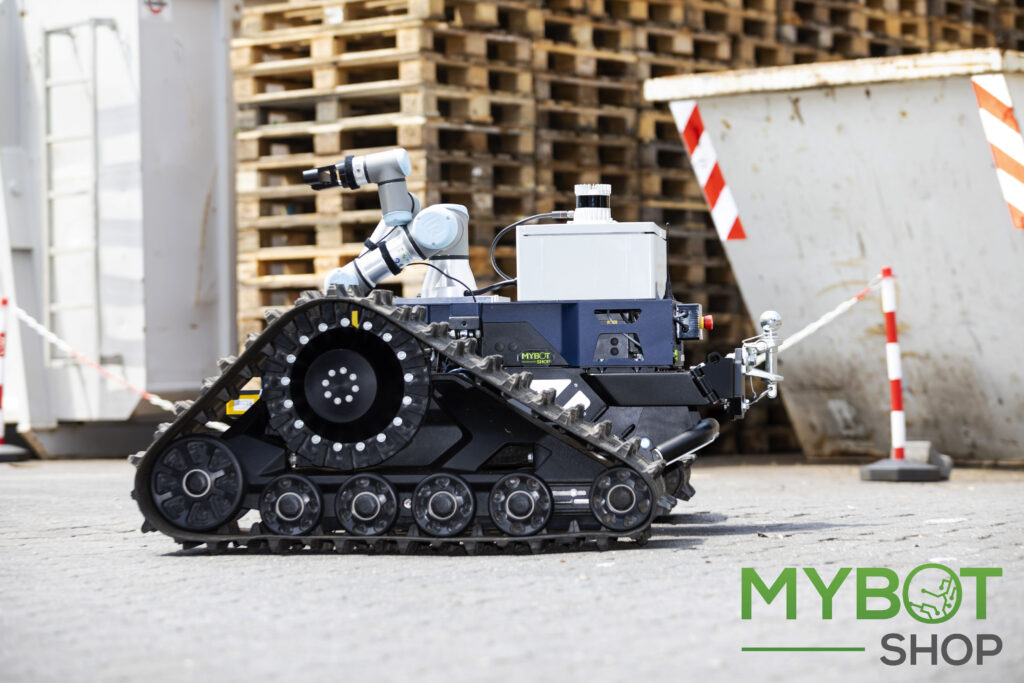
Mittels der externen Spannungsversorgung lassen sich Zusatzverbraucher wie Roboterarme, Kameras, 3D-LiDAR und weitere Komponenten anschließen. Gerade der Ouster 3D-LiDAR bietet sich für das Mapping an, das beim autonomen Fahren unausweichlich ist. Die via Ouster 3D-LiDAR detailgetreue erstellte 3D-Punktwolke basiert auf bis zu 128 Lagen bei einer Winkelauflösung von nur 0,18° und erfüllt dabei alle relevanten Datenschutz-Vorschriften.
Ein Roboterarm, wie der 6-achsige Universal Robots UR-3, ermöglicht unter anderem als Allrounder-Arm die mobile Manipulation.
Empfehlenswert ist die Nutzung eines HOKUYO UAM-05LP – einem sogenannten Safety LiDAR. Dies bedeutet, dass er durch seine TÜV-Süd-Zertifizierung, bzw. seinem redundanten Aufbau, unter anderem in Roboter-Mensch Applikationen eingesetzt werden darf. Dabei arbeitet das System nach dem so genannten ToF-Prinzip (Time of Flight) wobei die Zeit des emittierten Lichts gemessen wird. Infolge dessen sind maximale Messzeiten von 60 ms möglich.
Die verwendete Stereolabs ZED ist eine performante 3D-Kamera für einen breiten Anwendungsbereich. So verfügt diese Kamera über zwei 4 MP Kameras, wodurch 2 K-Aufnahmen (4416 x 1242 px) mit einer Framerate von bis zu 100 Hz ermöglicht werden.
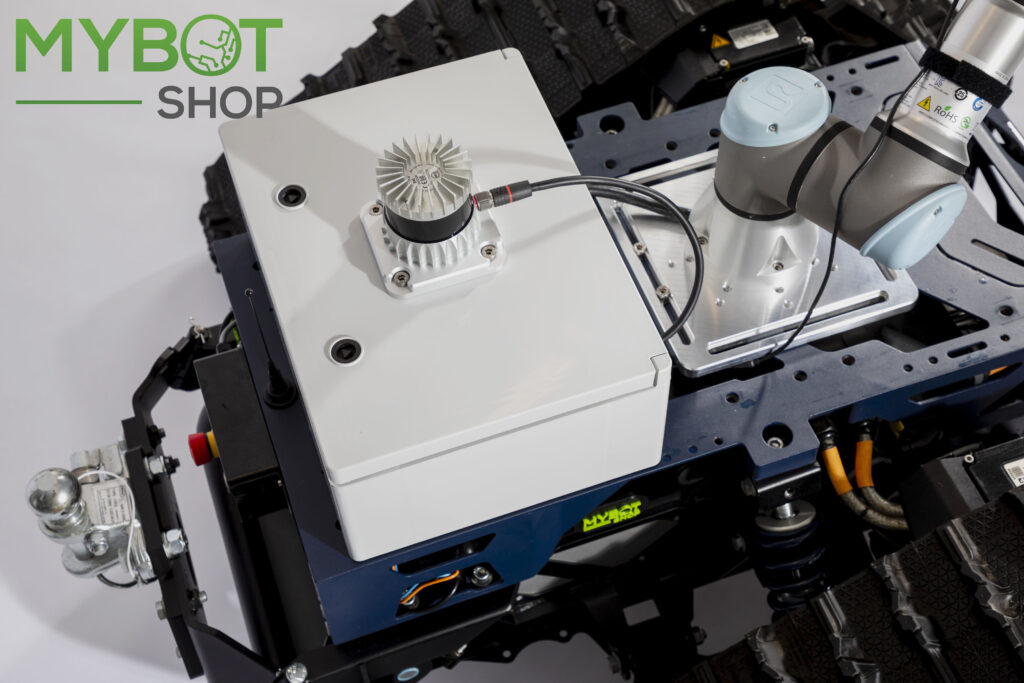
Mit dem MBS ROVO 2 kann MYBOTSHOP ein Produkt anbieten, das durch geringen Wartungsaufwand und eine lange Lebensdauer überzeugt – Preis und Leistung stimmen hier überein. Aufgrund jahrelanger Erfahrung, erprobter Technik, permanenter Weiterentwicklung und Verwendung qualitativ hochwertiger Komponenten im Fahrzeug rentieren sich die Anschaffungskosten in Höhe von 40.000 EUR (UVP). MYBOTSHOP Firmengründer Daniel Kottlarz schöpft aus der autonomen Zukunft und künstlichen Intelligenz das Potenzial, Arbeitsschritte und Prozessabläufe zu vereinfachen und die Kosten-Nutzen-Effizienz zu steigern. Ebenso können Mitarbeiter im gefährlichen Arbeitsumgebungen reduziert und deren Sicherheit unterstützt werden.
Better gripping with intelligent picking robots
Researchers from Germany and Canada work on new AI methods for picking robots.
ISLANDIA, NY, July 7, 2021 — Production, warehouse, shipping – where goods are produced, stored, sorted or packed, picking also takes place. This means that several individual goods are removed from storage units such as boxes or cartons and reassembled. With the FLAIROP (Federated Learning for Robot Picking) project Festo and researchers from the Karlsruhe Institute of Technology (KIT), together with partners from Canada, want to make picking robots smarter using distributed AI methods. To do this, they are investigating how to use training data from multiple stations, from multiple plants, or even companies without requiring participants to hand over sensitive company data.
“We are investigating how the most versatile training data possible from multiple locations can be used to develop more robust and efficient solutions using artificial intelligence algorithms than with data from just one robot,“ says Jonathan Auberle from the Institute of Material Handling and Logistics (IFL) at KIT. In the process, items are further processed by autonomous robots at several picking stations by means of gripping and transferring. At the various stations, the robots are trained with very different articles. At the end, they should be able to grasp articles from other stations that they have not yet learned about. „Through the approach of federated learning, we balance data diversity and data security in an industrial environment,“ says the expert.
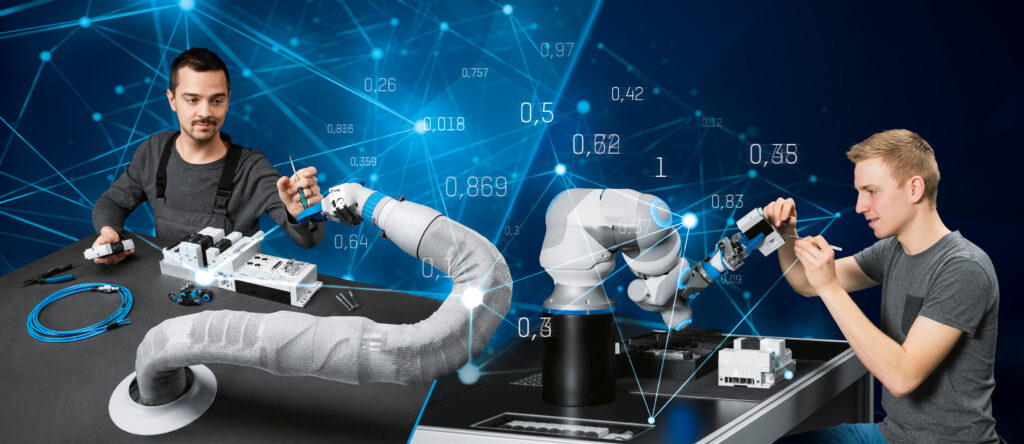
Powerful algorithms for industry and logistics 4.0
Until now, federated learning has been used predominantly in the medical sector for image analysis, where the protection of patient data is a particularly high priority. Consequently, there is no exchange of training data such as images or grasp points for training the artificial neural network. Only pieces of stored knowledge – the local weights of the neural network that tell how strongly one neuron is connected to another – are transferred to a central server. There, the weights from all stations are collected and optimized using various criteria. Then the improved version is played back to the local stations and the process repeats. The goal is to develop new, more powerful algorithms for the robust use of artificial intelligence for industry and Logistics 4.0 while complying with data protection guidelines.
“In the FLAIROP research project, we are developing new ways for robots to learn from each other without sharing sensitive data and company secrets. This brings two major benefits: we protect our customers‘ data, and we gain speed because the robots can take over many tasks more quickly. In this way, the collaborative robots can, for example, support production workers with repetitive, heavy, and tiring tasks”, explains Jan Seyler, Head of Advanced Develop. Analytics and Control at Festo SE & Co. KG During the project, a total of four autonomous picking stations will be set up for training the robots: Two at the KIT Institute for Material Handling and Logistics (IFL) and two at the Festo SE company based in Esslingen am Neckar.
Start-up DarwinAI and University of Waterloo from Canada are further partners
“DarwinAI is thrilled to provide our Explainable (XAI) platform to the FLAIROP project and pleased to work with such esteemed Canadian and German academic organizations and our industry partner, Festo. We hope that our XAI technology will enable high-value human-in-the-loop processes for this exciting project, which represents an important facet of our offering alongside our novel approach to Federated Learning. Having our roots in academic research, we are enthusiastic about this collaboration and the industrial benefits of our new approach for a range of manufacturing customers”, says Sheldon Fernandez, CEO, DarwinAI.
“The University of Waterloo is ecstatic to be working with Karlsruhe Institute of Technology and a global industrial automation leader like Festo to bring the next generation of trustworthy artificial intelligence to manufacturing. By harnessing DarwinAI’s Explainable AI (XAI) and Federated Learning, we can enable AI solutions to help support factory workers in their daily production tasks to maximize efficiency, productivity, and safety”, says Dr. Alexander Wong, Co-director of the Vision and Image Processing Research Group, University of Waterloo, and Chief Scientist at DarwinAI.
About FLAIROP
The FLAIROP (Federated Learning for Robot Picking) project is a partnership between Canadian and German organizations. The Canadian project partners focus on object recognition through Deep Learning, Explainable AI, and optimization, while the German partners contribute their expertise in robotics, autonomous grasping through Deep Learning, and data security.
- KIT-IFL: consortium leadership, development grasp determination, development automatic learning data generation.
- KIT-AIFB: Development of Federated Learning Framework
- Festo SE & Co. KG: development of picking stations, piloting in real warehouse logistics
- University of Waterloo (Canada): Development object recognition
- Darwin AI (Canada): Local and Global Network Optimization, Automated Generation of Network Structures
Visit www.festo.com/us for more information on Festo products and services.
About Festo
Festo is a leading manufacturer of pneumatic and electromechanical systems, components, and controls for process and industrial automation. For more than 40 years, Festo Corporation has continuously elevated the state of manufacturing with innovations and optimized motion control solutions that deliver higher performing, more profitable automated manufacturing and processing equipment.
